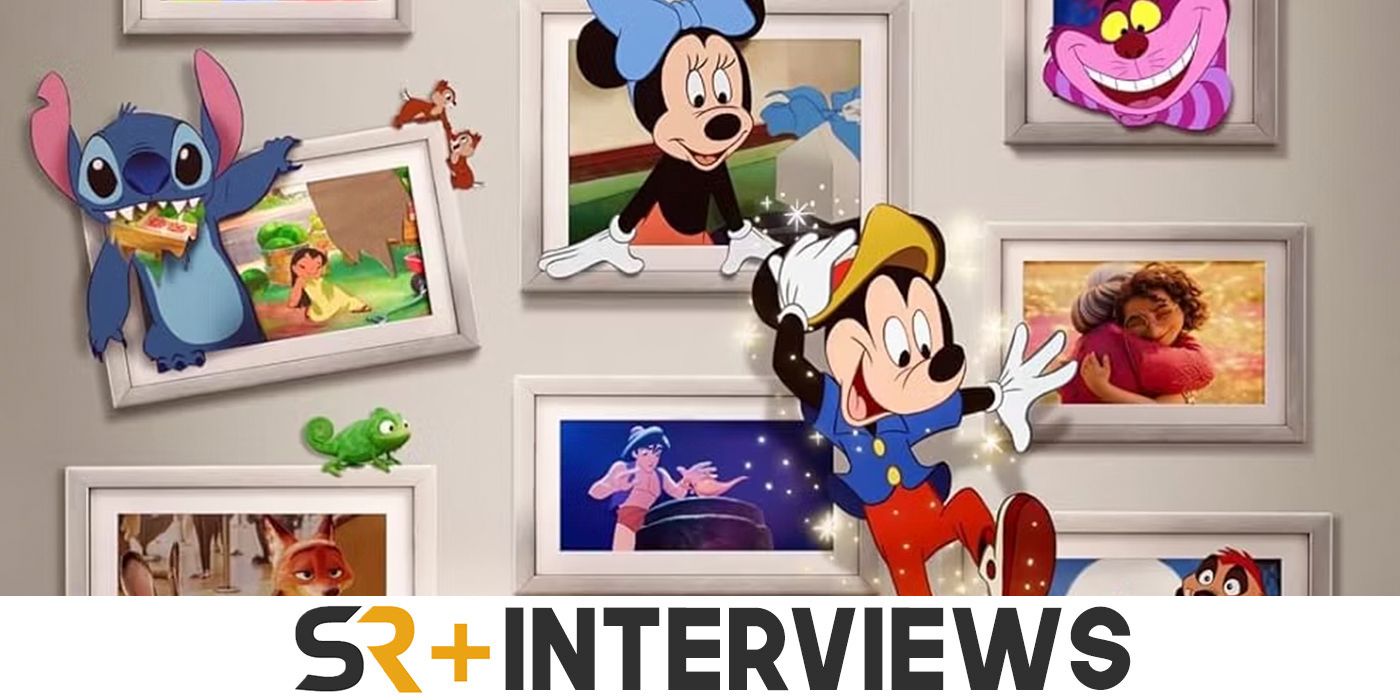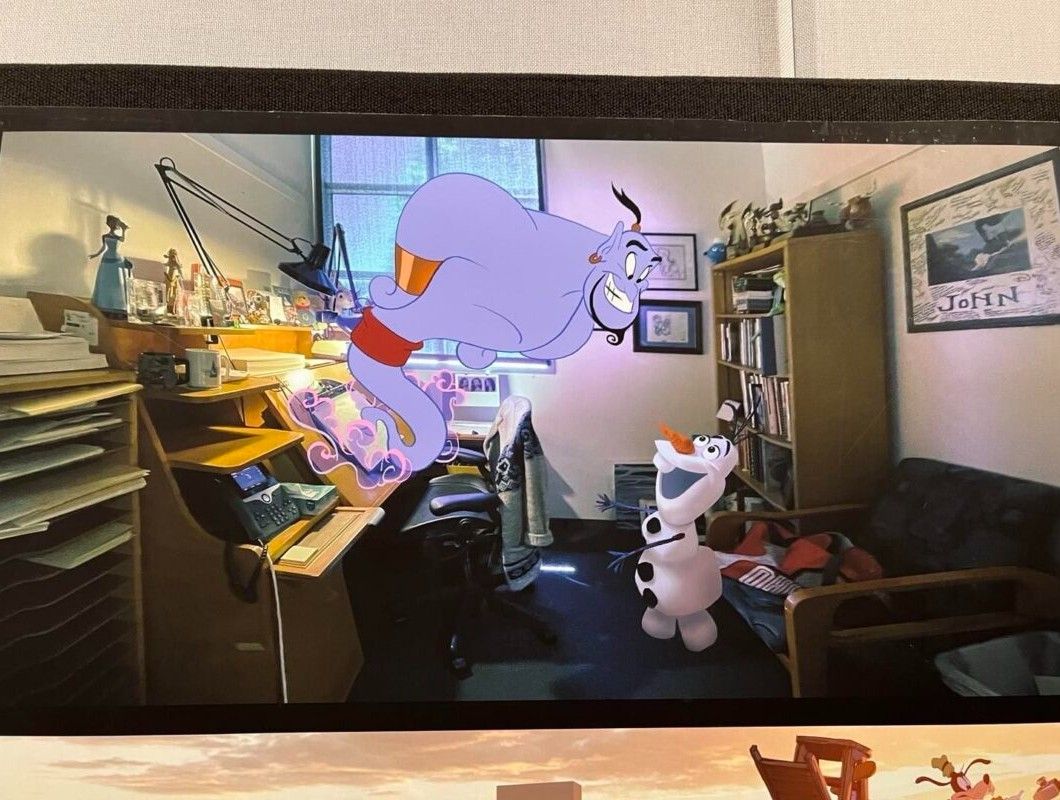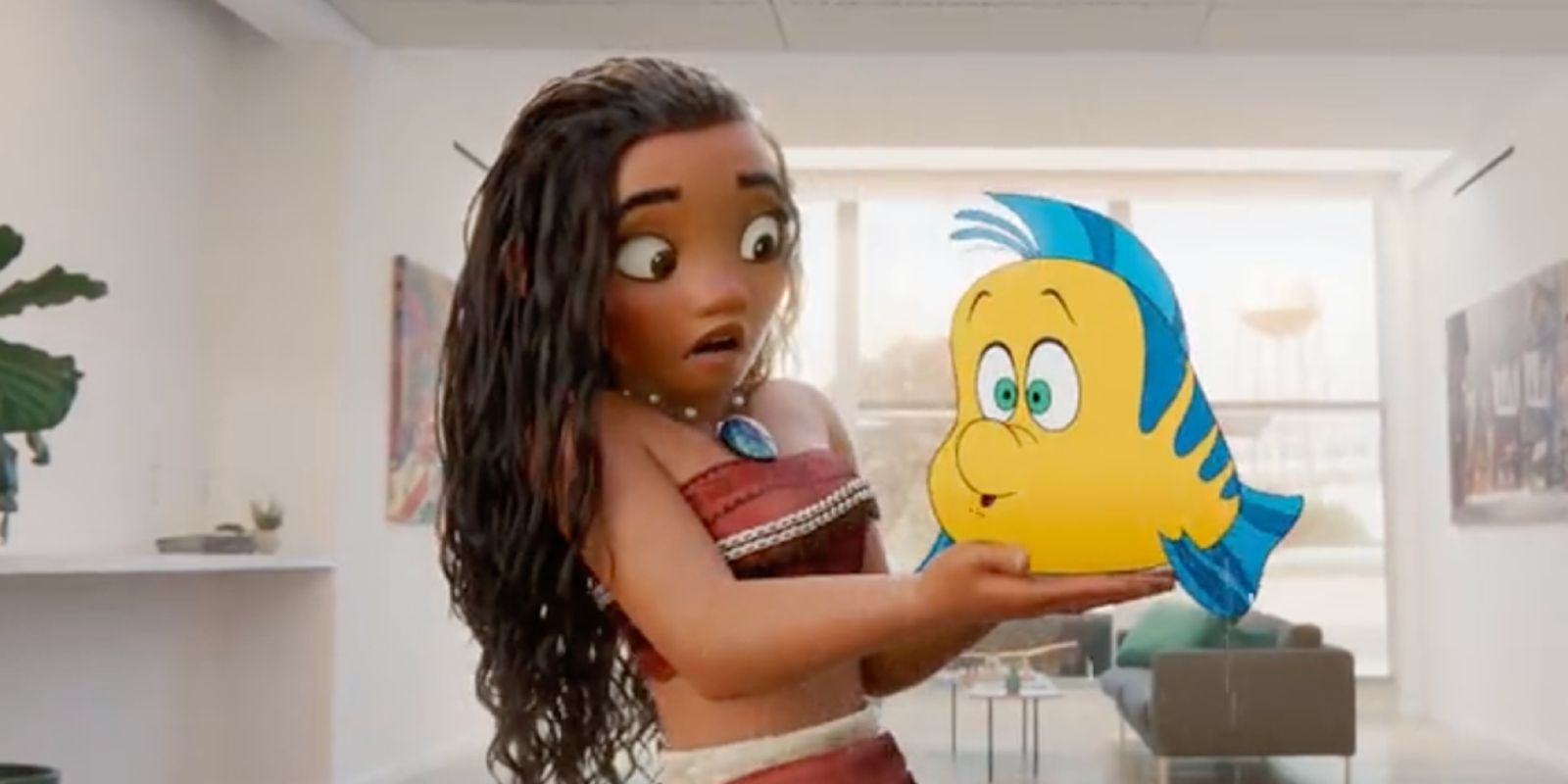Summary
- Once Upon A Studio is a celebration of Walt Disney Animation Studios' 100-year anniversary, bringing together over 500 Disney Animation characters.
- Directors Trent Correy and Dan Abraham discuss the technical challenges of blending different animation styles and choosing character pairings.
- The short also pays homage to Disney legends, with Richard Sherman recording music and portraits honoring key figures from the studio's history.
Once Upon A Studio is the culmination of 100 years of magic and animation, celebrating Walt Disney Animation Studios' milestone anniversary. In the short, Mickey and Minnie Mouse free themselves from pictures on the wall after the studio clears out for the day. The pair gathers over 500 other Disney Animation characters from all around the studio for a group photo.
Once Upon A Studio is written and directed by Dan Abraham and Trent Correy. The short features the voices of countless Disney cast members, including Kristen Bell, Jodie Benson, Auli’i Cravalho, Bill Farmer, Josh Gad, Ginnifer Goodwin, Jeremy Irons, Bret Iwan, Paige O'Hara, and Anika Noni Rose. Once Upon A Studio also utilizes archival recordings of Disney legends, including Robin Williams, Sterling Holloway, Bobby Driscoll, and Cliff Edwards.
Screen Rant spoke with directors Trent Correy and Dan Abraham about their work on the all-new Disney Animation short Once Upon A Studio. They explain the technical challenges of bringing the different Disney Animation characters together and pairing characters that have never shared the screen. They also share how they chose which version of Mickey Mouse to highlight in the short.
Trent Correy & Dan Abraham On Once Upon a Studio
Screen Rant: Trent, Dan, I think that Once Upon a Studio is the perfect way to celebrate Disney's 100th year of animation. This eight minute short made me go through almost every emotion I have, and it is absolutely fantastic. Can you talk about the challenge of bringing all these different animation styles together? Because one thing that I loved about this is that this is the way that I remember these characters and they're mushed together in this animation, and I thought that was such a great choice. So can you talk about the challenges of that process?
Trent Correy: Yeah, definitely. By the way, I love Screen Rant, so this is very cool. Yeah, I can talk about the technical challenges, and Dan can talk about the look. I think from day one of this pitch, when we brought it to Jennifer Lee, our CCO, and said, we want to make this short. In that pitch, we said, we want the hand drawn to be on paper with pencil. We want the CG characters to look as they do in our films and have characters like Chicken Little and Meet the Robinsons, our older CG films, and be on live action plates.
And you know what, I have to say, Dan and I were just so lucky because Disney has these amazing technicians and artists and production folks that we really got to just focus on the story and making the best moments and the team came together and just made all that work. So there were technical challenges, but I think at the core of all that was just communication.
We all work in the same building in Burbank, and our CG animators can walk down to the hand-drawn animators and say like, "Hey, we got to have characters holding hands. How do we make this work?"
So technical aside, I think it's just really good communication.
Dan Abraham: It was also really... We realized quite early on that every second you are with one character, it's actually taking time away from other characters. So, it was going to clip along, and it was very important to get the characters to look and sound and act exactly how you remember them. I'm so glad that you said that. That they looked like... Because we tried so hard for that. Right down to our clean up line. So, in Sleeping Beauty, it's the most beautiful sweeping colored ink lines.
But then you get into the sixties and seventies and you've got Robin Hood and the Jungle Book and the Aristocats, and then you've got the Xerox scritchy scratchy line with the crosshairs and stuff popping off. And so we made sure that the clean up reflected that because that was the era that that's what the characters had from their films at that time.
How did you come up with the pairings of these different dynamics that we get to see in the short? There's one elevator scene I don't want to spoil.
Trent Correy: That was the fun part. I mean, it turned into a giant jigsaw puzzle in the story room. We had our whiteboard of characters and Dan and I with a Sharpie, and really just trying to make each other laugh and say, "Hey, if we use so-and-so here, this would work."
But for that elevator sequence, Dan pitched that, and I think it was an early pitch, and I think that kind of became the bar for comedy because he just found two characters that have never shared the screen together, but of course, who would get the most upset waiting for an elevator than that character without spoilers. So I think that became part of the fun puzzle.
Dan Abraham: I mean, there's endless possibilities. You've got, I mean, thousands of characters with thousands of different dispositions and shapes and sizes and different things. So it was so much fun, and this could have been a lot longer, but we had to make something producible.
It has to be a goosebumps moment when you get Richard Sherman in there doing music, right? Because I feel that that's Disney icon, and you're listening to him play this music. What was that experience like for you guys just to be in the room with him?
Dan Abraham: Oh my gosh. Oh my gosh. Honor. Privilege. We didn't take it for granted on any step of the way. When we came up with the idea to use Feed The Birds in our short, it was the head of our music department, Matt Walker, that we saw him in the hallway one day and he said, "Well, why don't we get Richard Sherman to record that."
And we're like, "What? 94 years old?" And then he said, "Yeah, why don't we record that up in Walt's office?" On a Friday afternoon on the same piano that he used to play for Walt Disney up, just like we were like, oh my God, we didn't know we could dream that big.
Trent Correy: And stepping into Walt's office, it's refurbished, so it looks just as it did in the sixties, and seeing Richard at the piano, it got very emotional. I felt like we were stepping into a time machine a little bit, and then hearing him, as soon as he sat down, you couldn't get Richard off the piano. He was playing Supercalifragilistic and Feed the Birds. And like Dan said, an absolute honor.
We see these portraits on the wall. What are the significance of the people in those portraits? Because I feel like nothing's by accident.
Dan Abraham: Right.
Trent Correy: You're absolutely right. Nothing's by accident. By the way, Joseph, you're the first one to ask this out of everyone we've talked to. I'll let Dan talk about specific portraits, but from the get go, we knew we wanted to celebrate the films, the 62 films and shorts and the characters, but we also wanted this film to celebrate the building and the artists behind the characters and the people behind the cameras. So there was a huge effort from us and the team to make sure we did that through portraits in the background.
Dan Abraham: And that gets a little tricky actually, because there are thousands of people that worked at this studio, and we have said before that, boy, every single person that's ever worked here should be in the credits of this short, because that's why we made this, that's how we made this. That's why we work at where we work is because of their work and their dedication.
So, there's such a small number of people that are represented in the portraits, and there should be many, many, many more because everyone works so hard and is so dedicated. For a hundred years. But you have to have like Iwwerks there who worked with Walt in the beginning. And we have a younger picture of Bernie Matteson up there with his mentor, Eric Larson. So, it was fun to do, but at the same time, in the back of my head, I can't help but think of all the people that we don't have up, sadly, because there's just so many people.
Disney has this great tradition of passing down the artwork tradition from the older generation of the hand-drawn to now the digital age. Who are some of the Disney legends that you guys wanted to personally honor by paying homage to with Once Upon a Studio?
Trent Correy: Oh, wow. That's a great question. Yeah, I mean, you're absolutely right. A lot of our films look back, even our upcoming Wish is kind of looking back to what Sleeping Beauty did. And we're constantly going to the ARL, our animation research library to pull up that artwork and see what the kind of masters did.
But I got to say, honoring Bernie seemed like the big thing for this short. It was in Dan's drawings from the get go, he boarded that sequence of Bernie walking out. And the thinking behind that was that, here walks out Bernie, someone that's worked at the company for nearly 70 years with a young intern, and he's passing the torch. He's celebrating passing the torch.
Dan Abraham: And one of the portraits at the beginning is Walt and Roy and the team that worked on the original Alice comedies, which was way before... That was the first thing they did. And when they were just starting out and they were so scrappy and young and didn't have any money, but they were like, we're going to do this thing.
And then when you think of where they went from there and the hurdles, the constant hurdles, nobody thought... No one's going to sit through an hour and a half cartoon. Snow White is the most ridiculous thing in the world, but Walt put all of his money into it. All those types of things. That's what, and then the Nine Old Men with their talent, I mean, Bill Calls animation of Tramp waking up from his barrel in Lady In the Tramp is the reason I'm here today in this building. All that stuff. There's so many memories and so many homage thank-yous to those people.
Mickey's probably the most iconic Disney character there is. How did you guys settle upon this look for Mickey Mouse?
Trent Correy: Go for it, man.
Dan Abraham: Okay. Because when we knew we wanted to have a Mickey Walt moment, and when we kind of figured out what that was going to be, I said, "Boy, it would be a really nice visual for him to remove his hat and put it on his heart."
And then I thought, oh man, he wears that cute little yellow hat in Mickey's birthday party, 1942. And that Mickey is so adorable. Let's go with Mickey and Minnie, Donald and Clarabelle and all those from that short, that was where it all came from, was backing up from the Walt Mickey moment.
About Once Upon A Studio
When two new employees stay at the Walt Disney Animation Studios overnight, they will see all the Disney characters from the past and today come to life, and get all gather up for their very own picture taken for their 100th anniversary.
Check back for our other Once Upon A Studio interview with Yvette Merino & Brad Simonsen.
Once Upon A Studio will debut on ABC on October 15 at 8/7c and be available to stream the next day on Disney+.



